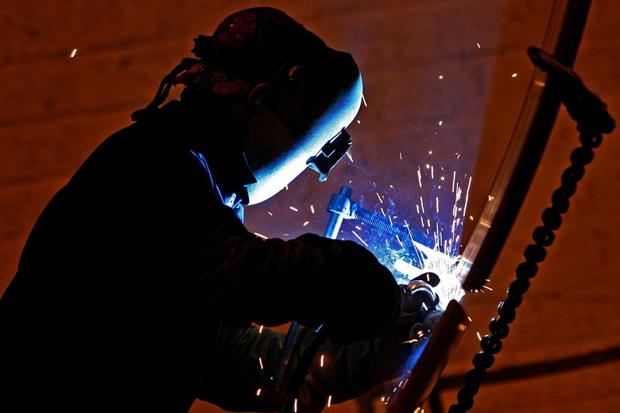Britain’s factories laid off staff in September for the first time in more than two years as the recession in the manufacturing sector bit.
Official figures yesterday showed that manufacturing contracted by 0.6 per cent in the first half of the year. September’s purchasing managers’ index for the sector indicated the decline continued into the third quarter.
The closely followed indicator slipped to 51.5 from 51.6 in August. While the reading of above 50 still signalled some growth, it was the equal weakest performance since 2013 and no better than the long-run average for the series.
Rob Dobson, senior economist at Markit, said: “The UK manufacturing sector remained sluggish at the end of the third quarter, stunned by a triple combination of a sharp slowdown in consumer spending, weak business investment and stagnating export order inflows.
“The survey is still broadly consistent with stagnation, or even a mild downturn, when compared to official data.” Thank you for stopping by. Before we carry on I want to to give thanks to http://www.hotelsintown.co.uk/ for their continued support and the support of their online community. Having a support team like this means a lot to us as we continue to grow our very own blog.
As optimism waned, companies cut jobs for the first time since April 2013. The survey’s jobs index fell below the 50 mark. Overall, Britain’s manufacturing sector is now performing more weakly than in the eurozone, which has been helped by a large depreciation in the currency.
On a more positive note, UK productivity finally bounced back strongly in the three months to June, according to the Office for National Statistics. Output per hour rose by 0.9 per cent, the sharpest quarterly rise in four years.
Output per hour is now the highest on record but is still languishing 15 per cent below where it would have been on pre-crisis trends. The authorities have long been waiting for signs of a rebound as UK workers are about a third less efficient than in Germany and France.
Signs of a nascent recovery in productivity alongside rising unit labour costs moved the UK closer to its first interest rate rise since 2007. Mark Carney, the Bank of England governor, has said he would need to see “unit labour costs start to move up into the high ones and the twos [per cent]”.
The ONS data showed that year-on-year unit labour cost growth rocketed from 0.3 per cent in the first quarter to 2.2 per cent – its highest since 2012. Alan Clarke, UK economist at Scotiabank, said that was “another box ticked for a rate hike”.
The pound rose 0.12 per cent against the dollar and 0.33 per cent against the euro in early trading.
Manufacturing was again a weak point, with output per hour declining by 0.5 per cent and unit labour costs rising by 3.1 per cent – indicating the build-up of some inflationary pressure in the industry.
Problems in Britain’s factories underlined the two-speed nature of the recovery, as the services sector continued to bound ahead. Output per hour in the services sector grew 0.7 per cent in quarter.
Zach Witton, deputy chief economist at EEF, the manufacturers’ organisation, said: “The data suggests the challenging export environment and weak demand for investment goods in the oil and gas sector has started to take a toll on business confidence.
“There are also signs that domestic demand driven by consumers – a recent key supporter of the PMI – is coming off the boil, with consumer goods producers seeing a substantial slowdown in output growth. Overall, until we see an improvement in export markets, manufacturing will remain under pressure.”


